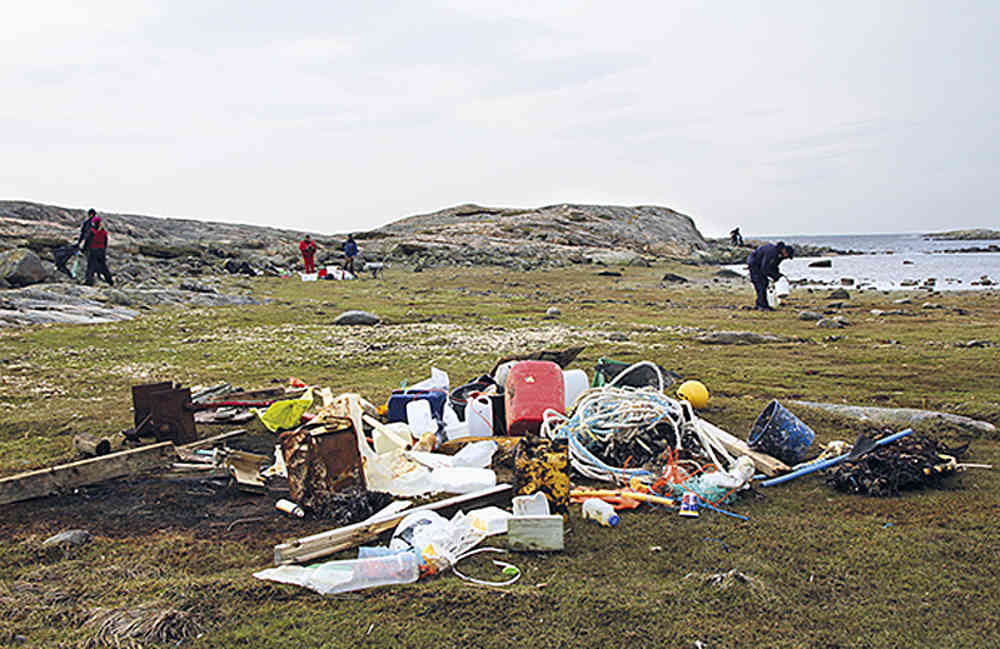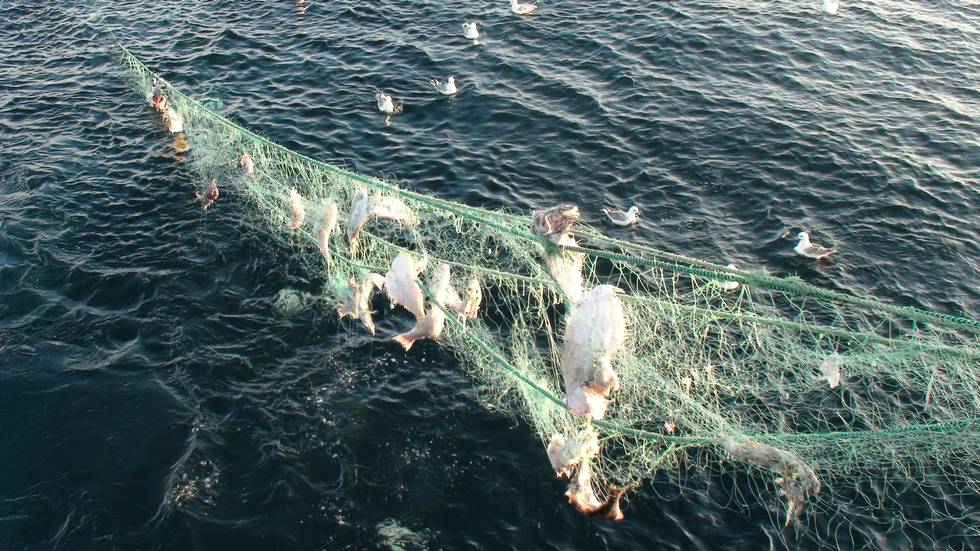“Some of the debris washes ashore,” says Erlend Standal, senior advisor at the Department of Industries and Oceans at the Norwegian Environment Agency. “Along the coast in the south we see mostly household waste. This is the most populous area of Norway. This is also where the debris that follows the ocean currents from Europe first reaches Norway.”
Further north the debris predominantly consists of fishery items, such as floats, rope bits, fish crates, and parts of seines and nets.
Plastic waste is the most harmful
Unlike paper and food waste, plastic waste in the ocean takes a long time to biodegrade. For some types of plastic it may even take centuries. Birds mistake visible bits of plastic for food, and such bits can get stuck in their gullet and choke them or end up in their stomach or colon and prevent food from being digested.
Even when plastic is broken down into invisible bits, it remains a threat to the environment. Plastic bits less than 5 mm in size, known as microplastic, are eaten by animal plankton, so that pollutants both in and on the plastic are introduced into the food chain. Ultimately, such pollutants can end up in the fish on our dinner tables.

Beach Cleanup Day at Hvaler in 2012. Photo: Oslofjordens friluftsråd.
It is better and less expensive to prevent such litter from reaching the ocean than cleaning it up afterwards. This is why Norway has joined forces with fourteen other countries and the European Union to develop an action plan against marine debris through the OSPAR convention.
Microplastics are found in many products, such as ones used in body care. Several exfoliating scrubs contain microplastics, and when such scrubs are rinsed away in a shower or a sink, the plastic bits end up in the ocean.
When being washed, also clothes made from synthetic fabrics release microplastics that follow the waste water to the ocean.
According to Standal, “every time you wash your fleece jumper, it can release as many as 2,000 bits of microplastic”.
These are examples of sources of marine debris that OSPAR’s action plan is meant to curtail.
Ghost fishing
Nets and traps that are lost during fishing lead to so-called ghost fishing and can capture fish and shellfish for many years.
The problem is greatest in Northern Norway and in deep waters. This is because it is in Northern Norway that such stationary gear is most in use. The natural overgrowth of the nets also takes place more slowly in Northern Norway and in deep waters. This entails that ghost nets can capture fish for a longer time in Northern Norway and in the deep than in Southern Norway and in shallower waters.
Cleanup expeditions
The Norwegian Directorate of Fisheries has addressed the issue of ghost nets since 1983. Until the mid-2000s, around three weeks a year were devoted to searching for ghost nets. Funding has increased since 2010, so that currently around forty days a year are set aside for such expeditions.
Facts:
The OSPAR convention aims to protect and preserve the environment in the Northeast Atlantic:
Little research has been carried out on the number of fish and animals that die in ghost nets. Experiments with Greenland halibut nets showed a high turnover rate in such nets: captured fish could be devoured by seabed creatures already after a day, freeing up space for the ghost net to capture more fish.
“This does not mean that ghost nets negatively impact the population levels of fish and shellfish, even though they entail unwanted extraction. Too little research has been done here,” underlines Gjermund Langedal, senior advisor at the Norwegian Directorate of Fisheries.
The directorate gives priority to the ocean waters from the West Norwegian county of Sogn og Fjordane and northwards, since those are the areas with the greatest reported loss of nets. This year’s cleanup expedition retrieved around 1,000 ghost nets. Since the programme’s inception the Norwegian Directorate of Fisheries has retrieved over 18,000 such nets.
Better reporting is desired
“Fishers are obliged to try to retrieve lost fishing gear themselves,” Langedal points out. “When that isn’t feasible, fishers are to report the loss of their gear to the Coast Guard Central.”
There is room for improvement in such reporting.
Currently, fishers must call or send an e-mail to the Coast Guard Central for a manual registration of where the fishing gear was deployed. Similarly, lost gear is mainly reported to the Coast Guard Central by fishers calling in the loss. Details are crucial when dragging for lost fishing gear at depths of up to 700 to 800 metres. Hence, the Norwegian Directorate of Fisheries will usually contact the fisher who reported the loss in order to obtain further information.
“An electronic system where fishers can report the exact position and how the loss occurred will hopefully increase both the amount and quality of the feedback, and thereby cut down on the Coast Guard Central’s work,” Langedal says.
FishInfo
According to Rita Naustvik Maråk, head technician for fishery technology at the Norwegian Seafood Research Fund (FHF), efforts are being made to simplify such reporting.
“FHF, along with SINTEF and Barentswatch, is developing digital solutions where fishers can electronically mark the position of where their deployed fishing gear begins and ends,” she explains. “Such information can be combined with data on currents and weather conditions to calculate where the lost gear has been driven.”
The project is called FishInfo. Barentswatch shall contribute with map overlays from various public agencies to be used in the fishers’ map plotters. Maråk hopes that key elements of this programme will be ready for use during 2015.
Sensors
In order to further ameliorate the search for ghost nets, work is being done on developing sensors that can be attached to the fishing gear. If a net is lost, the sensor can then indicate its exact position on the ocean floor. A commercial breakthrough is not yet in sight, however. Such sensors must withstand saltwater, high pressure, and rough treatment during fishing in inclement weather, be small enough not to hinder the fishing, and not be too expensive.
“There are many demanding requirements,” notes Langedal. “As yet we are in a phase of development and testing.”
